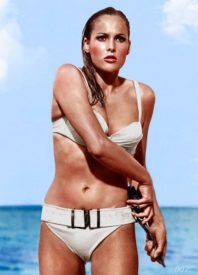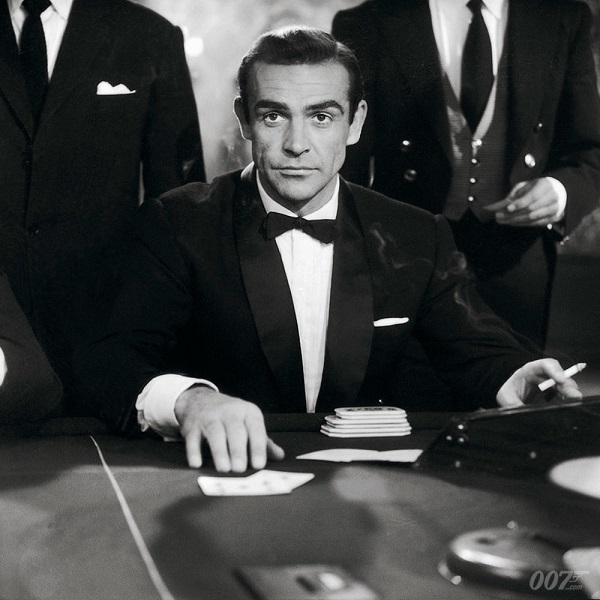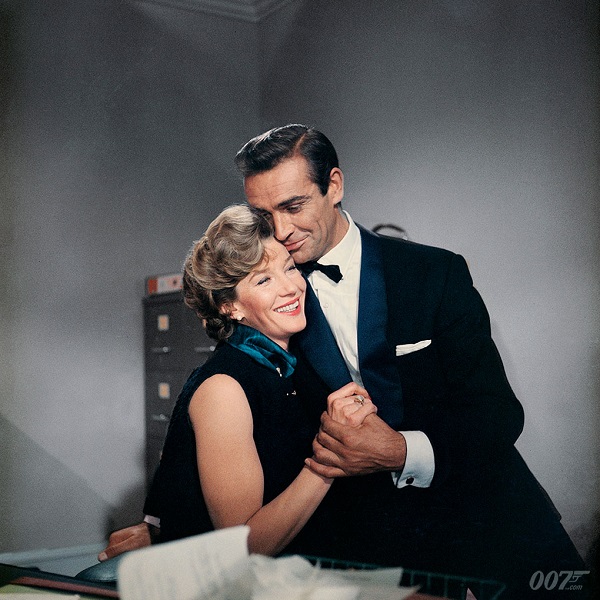
“Bond, James Bond.”
This iconic introduction, ranking at #22 on AFI’s Top Movie Quotes of all time, brought secret agent 007, James Bond, to movie screens around the world in 1962. However, the character had already been around for a decade. Created by Ian Fleming, Bond first appeared in the literary world in the novel, Casino Royale in 1953. A gritty, dark and violent tale that caught the attention of readers from all walks of life.
Long before Albert ‘Cubby” Broccoli and Harry Saltzman could nab the rights in 1954, an American studio snapped up Royale for their anthology series, Climax! and Barry Nelson as Jimmy Bond was determined to best Le Chiffre in this horrible adaptation of the too gritty for 50s television.
In 1958, the UK newspaper, Daily Express began a serialised comic strip that adapted the novels, and attempted to faithfully recreate the storylines of the novels. The strips ran until the early 80s, and served as an interesting contrast to the films, which over the years became bigger, bolder and increasingly separated from the source material.
After a fortunate meeting, Broccoli and Saltzman endeavoured to bring Bond to the screen, and went about recruiting the talent that would help give 007 the screen longevity they saw for him. The search for a suitable actor, described as being very much like Hoagy Carmicheal but with a scar on his right cheek, and a cruelty around the lips, began. The producers reached out to Cary Grant. But he would only commit to one film, and Broccoli and Saltzman saw a number of sequels, endless possibilities. Though casting would come up time and again over the decades and create much debate over who could take over the coveted title.
But first, Scottish actor, Sean Connery, was tapped, and under director, Terence Young’s tutelage, became Bond. He roughened the edges of the young actor and turned him into the debonair presence that Bond would need to have on screen. The cast was rounded out with the stunning Ursula Andress as the female lead, Honey Rider – who is given her own iconic entrance.
Joseph Wiseman plays the nefarious titular villain, which required a makeup job to give the actor an Asiatic look (the addition of a prosthetic to convey an epicanthic fold on the eyes), in addition to his metal hands. Bernard Lee plays Bond’s boss, M., the lovely Eunice Grayson plays Sylvia Trench. And Peter Burton plays Major Boothroyd, a role that would become known as Q, and taken over by Desmond Llewelyn. Jack Lord plays CIA agent Felix Leiter, and John Kitzmiller plays Quarrel, two characters who have strong friendships with Bond in the books.
Compared to the films that would follow, perhaps excluding From Russia With Love, this is probably the smallest of the Bond films, though one of the most faithful, though the plot at the time was seen as a bit outrageous.
When London loses contact with their station in Jamaica, run by Strangways (Tim Moxon) – another name that pops up a lot in the novels, and the agent is discovered dead, 007 is sent to investigate and soon discovers a plan, led by Dr. No, working for a criminal organisation known as SPECTRE (SPecial Executive for Counter-intelligence, Terrorism, Revenge and Extortion), to topple American rockets as they launch.
The film was shot at Pinewood Studios and on location in Jamaica, which is where Fleming wrote a majority of his Bond novels, from his home called GoldenEye. Locations have always been a big thing for the 007 movies taking us to exotic and exciting locales, giving the films an international flavor as Bond globe trots.
When it came to set and production design, there is a sense of the larger than life permeating almost all of the series, starting right here in Dr. No. Overseen by Ken Adam, the sets are as much a star of the film as the cast and locations. They have to convey the structure and control of the MI6 office, or the imposing questioning cell of Dr. No, all the way to his lair, and operations floor. All of it has a sense of heightened reality which plays beautifully on the screen, even to this day.
That lone chair, and table in that slightly askew feeling room is an image that has stayed with me over the years.
The Bond films served as a training and working ground for lots of journeymen and artisans, as they worked to churn one feature out after another. The Bond film unit with minor changes throughout the years, stayed pretty much the same through to the end of the Timothy Dalton films, something which, had an effect on the product they released.
Editor Peter Hunt cut Dr. No together, giving director Young’s visual pulp style a violent rough edge, as fists and bullets fly. The film exudes cool with the threat of violence hanging around the edges of each frame, shot by Ted Moore, the director of photography.
Set design, performance, editing and photography all are perfectly aligned for that first reveal of Bond’s tough dark edge, when he brutally shots Dent (Anthony Dawson) in Taro’s (Zena Marshall) apartment.
And what would a James Bond film be without those opening titles? Maurice Binder came aboard and shot what would become a staple of the Bond movies, the titles, and music. He wasn’t around for From Russia With Love or Goldfinger. but saw the rest of the series through up to and including Licence to Kill. After which, the studio wanted to shake things up a bit, and still pay homage to what had gone before, but let others try their hand.
The score for Dr. No was written and arranged by John Barry, while the iconic James Bond Theme itself was originally written by Monty Norman. Court cases have ensued over this, but it comes down to this in the end, Norman’s work proved unsatisfactory for the film. And Barry came aboard, adapting and arranging the theme that Norman had composed. And like so many other artists that stayed with Bond, John Barry scored eleven James Bond films in total. He, much like production designer Ken Adam, title designer Maurice Binder, and director Terence Young, was just as influential in the success and design of James Bond as anyone who appeared on camera.
To promote the film before its release on 10 October, 1962, artwork and poster concepts circulated (there are some truly stunning pieces to be found from around the world). But North American audiences would be privy to a poster designed by Mitchell Hooks, which was tweaked, including the creation of the iconic 007 gun logo by David Chasman.
One of the big tag lines on the poster, in addition to introducing the cinematic world to James Bond, was the claim that this was the first James Bond adventure, revealing the intention to create a series of films.
Dr. No did not disappoint, Connery seems at ease in the role of Bond and is a natural, exuding charm and cool, even when he’s forced to deliver a particularly racist line to Quarrel when he tells the fisherman to fetch his shoes. Audiences fell in love with the style. And it goes without saying that men wanted to be Bond, and women wanted Bond.
As Bond journeys across the Jamaican beaches confronting baddies (the role of lead henchmen would come up with Goldfinger, though a case could be made for From Russia With Love) and travelling to Dr. No’s island of Crab Key, audiences thrilled at the violence and sexuality which wasn’t quite as prevalent in the media of the times as it is today. Dr. No was new, shocking, titillating, intense, and did not turn a blind eye away from its violence.
The English wit which James Bond would come to personify is hinted at here, as there are moments of gallows humour (I think they were on their way to a funeral). But it definitely doesn’t descend into quite so tongue in cheek as later entries. There is always a dark edge to this incarnation of Bond. Aand while the film version of the character would drift away from some of his literary traits (and appearance), Dr. No‘s reveal of the character works brilliantly.
There are few explosions in this film, Dr. No’s hideout at the end of the film (something that would become a recurring motif for some of the early Bond films, and a spectacular car crash). But that didn’t stop the movie from blowing up at the box office and becoming a rousing success. One that launched the longest still running film series to date. As the credits rolled on Bond and Honey sliding down into an embrace, we were extolled with the line…
James Bond will return in From Russia With Love.
Thanks to DK Canada for their assistance with their books, Bond By Design: The Art of the James Bond Films, James Bond: 50 Years of Movie Posters, and the James Bond Encyclopedia.
- Release Date: 10/10/1962





